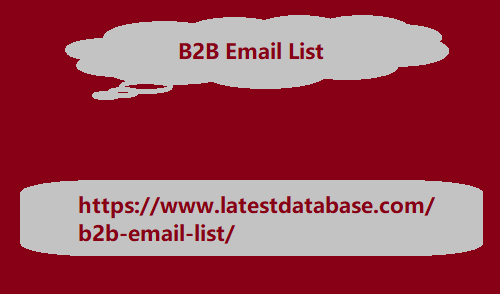Post by account_disabled on Jan 24, 2024 3:43:19 GMT
Define each stage of the "funnel" and the responsible department Prepare specific materials and offers, based on the current status of the Lead Don't get demotivated by rejected Leads. Reevaluate the reasons and use it as an opportunity to improve Beware of "promising" Leads! Turnaround time is important For B2C and B2B organizations, the process of generating leads is a must, get it right, and when done right, it can take the "helm" of your business's success. This explains why 63% of companies consider the process of generating traffic Leads as the most important challenge. However, Lead generation definitely has its own hurdles to overcome. Before we dive into optimizing your Leads activity, let's take a look at the Lead generation process from a general perspective. What is the Lead Generation Process? Inbound Lead Generation is the process of identifying people who are interested in your company's products and who can potentially become your customers. This is done through the "funnel" of Leads, which is a form of identification for the distribution that is made up to the "eyes" of people.
Leads move through this "funnel" when customers express an interest in the offers you present, for example by downloading content from your website Leads are then "fed" by other marketing activities, such as emails, retargeted ads, social media campaigns, or special offers. During the journey through the "funnel", the marketing team evaluates the probability of each Lead to convert an individual into a customer. This is the determining factor in whether a Lead should be rejected, upgraded, or should be passed on to the qualified sales team for a stronger sales interaction. Finally, ongoing monitoring is es B2B Email List sential to see if these Leads are performing as efficiently as possible. How to optimize the Lead generation process? The process of generating Leads is a complex process and is a time-consuming operation. It can take weeks or months for Leads to turn into customers for your business. If you want to know even more, the generation of Leads includes both the Marketing team and the Sales team, along with other departments of the company or organization.

Since a number of departments interact in this project with a common goal, it can make it difficult to maintain calm, effectiveness and agreement among individuals. But, if all the "players" would find a common language between each other and the strategy would be clear to each of them, then fantastic results can appear that will take your company to another level. We will suggest 4 simple methods to ensure that the Lead generation process you are following is optimized and has a high performance: Define each stage of the "funnel" and the responsible department The Lead generation "funnel" includes all stages and forms of marketing during closed sales. When you create the "funnel" of generating Leads, make sure that you have an accurate separation between the sectors that the Marketing department will manage, from the sectors that the Sales department will manage. In the above example, MQL (Marketing Qualified Leads) is the stage in which Marketing hands over the responsibility of Leads to the Sales department. By the time Leads are qualified from the perspective of the Marketing staff, they are called enough to be managed by the Sales staff.
Leads move through this "funnel" when customers express an interest in the offers you present, for example by downloading content from your website Leads are then "fed" by other marketing activities, such as emails, retargeted ads, social media campaigns, or special offers. During the journey through the "funnel", the marketing team evaluates the probability of each Lead to convert an individual into a customer. This is the determining factor in whether a Lead should be rejected, upgraded, or should be passed on to the qualified sales team for a stronger sales interaction. Finally, ongoing monitoring is es B2B Email List sential to see if these Leads are performing as efficiently as possible. How to optimize the Lead generation process? The process of generating Leads is a complex process and is a time-consuming operation. It can take weeks or months for Leads to turn into customers for your business. If you want to know even more, the generation of Leads includes both the Marketing team and the Sales team, along with other departments of the company or organization.

Since a number of departments interact in this project with a common goal, it can make it difficult to maintain calm, effectiveness and agreement among individuals. But, if all the "players" would find a common language between each other and the strategy would be clear to each of them, then fantastic results can appear that will take your company to another level. We will suggest 4 simple methods to ensure that the Lead generation process you are following is optimized and has a high performance: Define each stage of the "funnel" and the responsible department The Lead generation "funnel" includes all stages and forms of marketing during closed sales. When you create the "funnel" of generating Leads, make sure that you have an accurate separation between the sectors that the Marketing department will manage, from the sectors that the Sales department will manage. In the above example, MQL (Marketing Qualified Leads) is the stage in which Marketing hands over the responsibility of Leads to the Sales department. By the time Leads are qualified from the perspective of the Marketing staff, they are called enough to be managed by the Sales staff.

 so i can make admins
so i can make admins